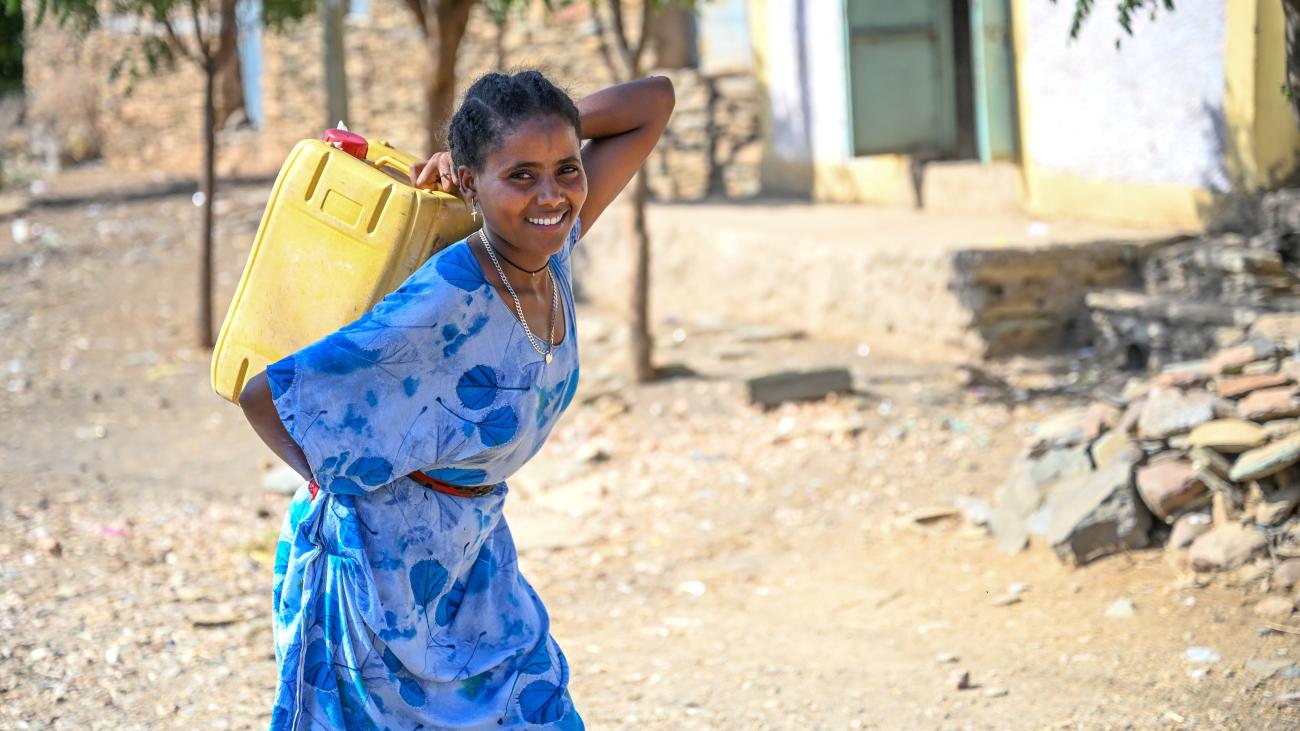Thirst for Change: The Fight for Access to Safe Water

For as long as Amaru Wuldu can remember, girls in her villages woke up before dawn to strap an empty jerrycan to their backs and set out towards the river, a jo
Those who owned donkeys could load them up with water containers; those who didn’t bore the weight themselves.
For 25-year-old Amaru and thousands of women and girls living in the mountainous Abergele and Tsagibji woredas of Amhara region in northern Ethiopia, access to safe water has never been taken for granted. The rivers that snake through the valleys were their lifeline—and their greatest source of hardship.
A daily struggle for schoolgirls
Fetching water was not just exhausting; it was dangerous. Girls often walked in groups, accompanied by boys from their villages, hoping their presence would deter would-be attackers. But once the sun rose, the boys would leave, and the girls stayed behind, vulnerable.
The girls’ schooling also suffered due to this daily trek for water

Even before conflict erupted in northern Ethiopia, access to safe water was limited. In Abergele, just 30% of people had access to piped water. In Tsagibji, many relied on shallow ponds, which are unprotected and exposed to contamination.
But when the northern conflict touched this vulnerable community, what little they had was destroyed. Generators that powered water pumps were left in ruins. Newly completed communal water points, locally known as bonos, were ripped apart. The few sources of safe water dried up, and for seven months, Abergele’s residents only had rivers as a source of water.
A turning point
Local authorities are now stepping up to rehabilitate water infrastructure with the help of partners through the UNDP Peace Support Facility with resources from the Governments of Germany, Japan, and the Netherlands, as well as UNDP Core Partners and Funding Windows. Their generous contribution has helped local authorities across northern Ethiopia, repair 127 water schemes, offering 85,000 people across in Afar, Amhara and Tigray regions a glimmer of hope.
In Abergele, a generator was repaired, 1.2 kilometres of pipelines were restored, and 11 new communal water points were built, providing relief to 4,400 households. In Tsagibji, two bonos were rehabilitated, giving 6,000 people daily access to safe water.
Community ownership
The community has a strong sense of ownership of the water points. Residents pay a small fee for water, which is used for maintenance. In some areas, elderly and disabled members of the community are employed as water point guardians.
Denberu Abebe, a father of five who lives with a disability, is one of those hired by the community as a water point guardian.
More investments needed
Despite the improvements, the fight for water security is far from over. Many villages still rely on rivers, and generators can only run for eight hours a day. In some areas, women still walk for miles, children still fall ill, and girls still miss school.
Mitiku Geta, head of Nirak Health Center, says, “After the rehabilitation and construction of new water points, the water-related cases in Abegele town have significantly decreased. However, people from neighboring kebeles without access to clean water still come to the center seeking treatment for waterborne illnesses.
“Safe water should not be a privilege but a right,” says Tiru, who is more optimistic about her future. Thanks to the water point it only takes her a few minutes to fetch water now. “I don’t miss any schooling anymore,” she says, confidently adding, “I am going to university to become an engineer and make Abergele better—one drop of water at a time.”
Amaru's life is also changing. She used to leave two-year-old toddler with neighbours as she walked for hours to fetch water, but these days the young woman has water piped straight to her home.



